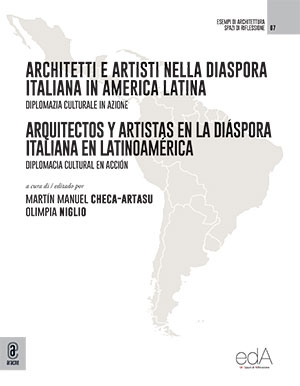DOI: 10.53136/97912599439035
Pages: 92-119
Publication date: September 2021
Publisher: Aracne
SSD:
ICAR/18
The article goes back to a time in the history of Chile characterized by significant economic growth that generated political, social and cultural changes that were reflected in the different spheres of society, particularly in building production and in the mark acquired by the territories. , presumably linked to the participation of professionals who had been hired in Europe to support the Republic in managing its growth and who, in the installation process, linked their training and expertise with local customs and practices, generating new readings and interpretations. The architects who migrated to Chile in the mid-nineteenth century came from different countries and joined the local industry working for the State, the Catholic Church and private clients, they were very prolific and their works have been unevenly studied by national historiography, opportunity that was welcomed in this study trying to relieve the work of the Italian architect Eduardo Provasoli. Provasoli’s contribution to Chilean architecture extended from his arrival in the country in 1875 until his death in 1926, a period in which different productions were identified, including churches, houses and mausoleums, highlighting four churches and a house that have been declared a Historical Monument by The Council of National Monuments evidenced the relevance of being part of the built heritage that characterizes the country and that must be preserved for the understanding of the territory and its culture, a situation that in 2000 UNESCO confirmed by giving the San Francisco de Castro Church the category World Heritage Site, also recognizing the relevance of the acculturation process that merged the author’s original stylistic intentions, knowledge and experiences with the appropriation of local construction strategies, generating a neo-Gothic style building built entirely of wood.
Keywords: Catholic Temples, Architecture, Transculturality.


